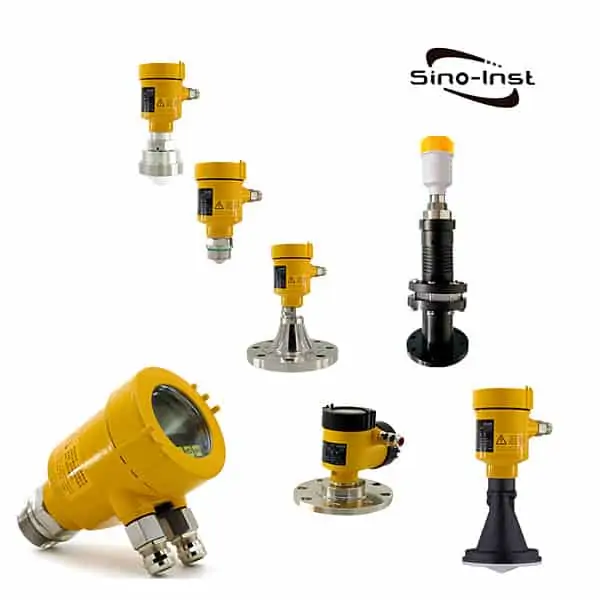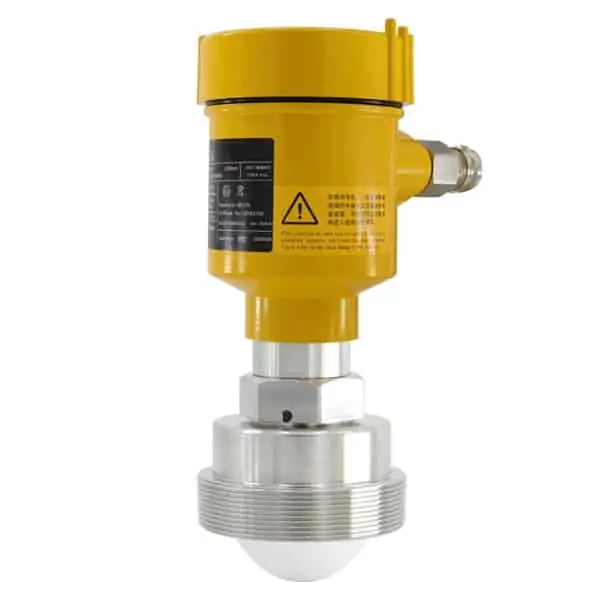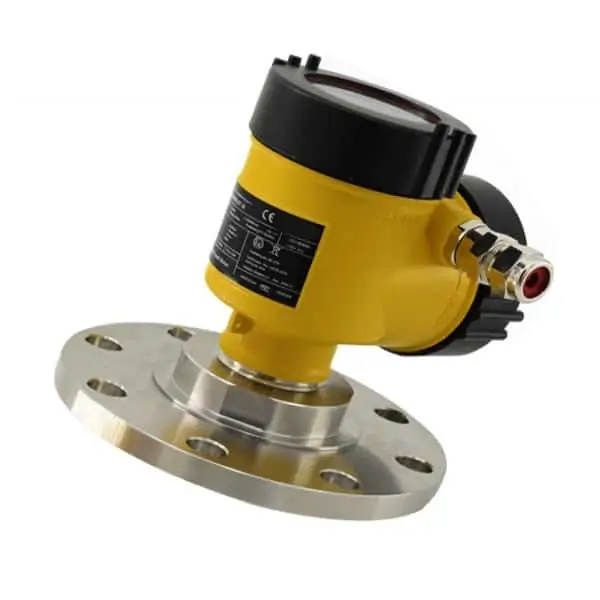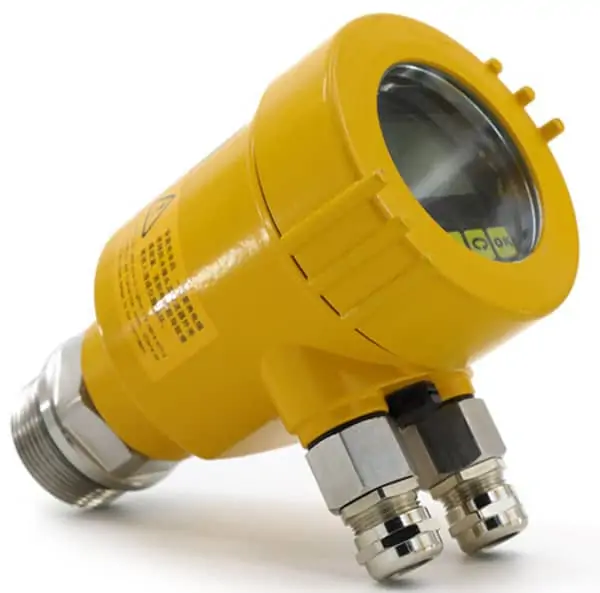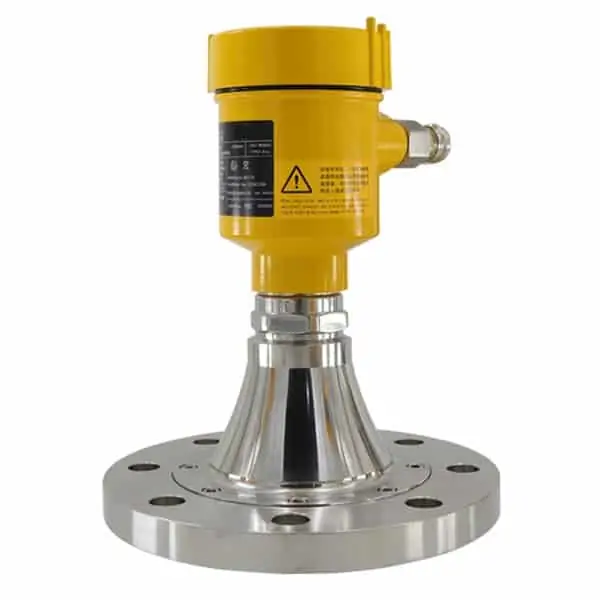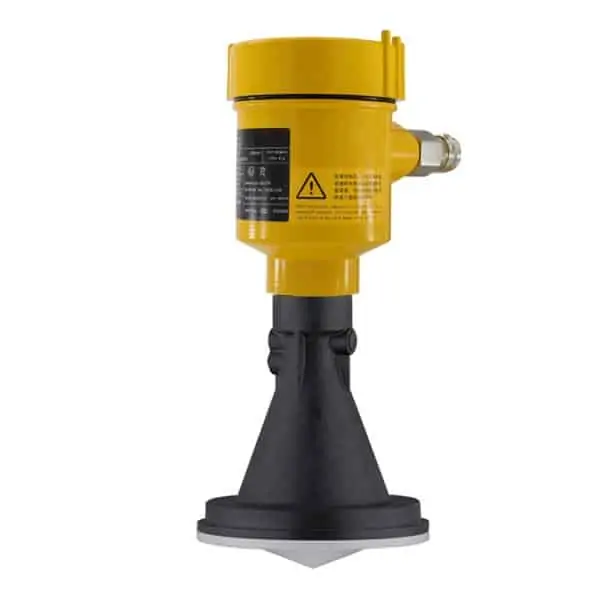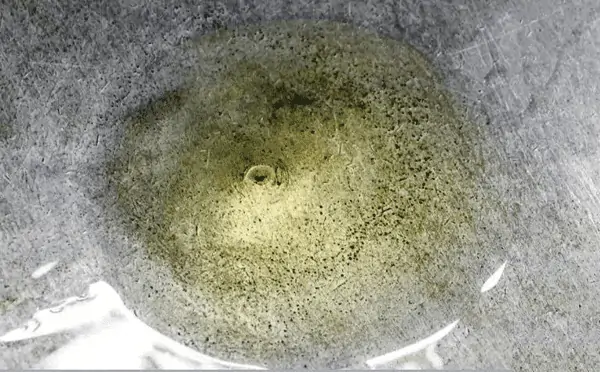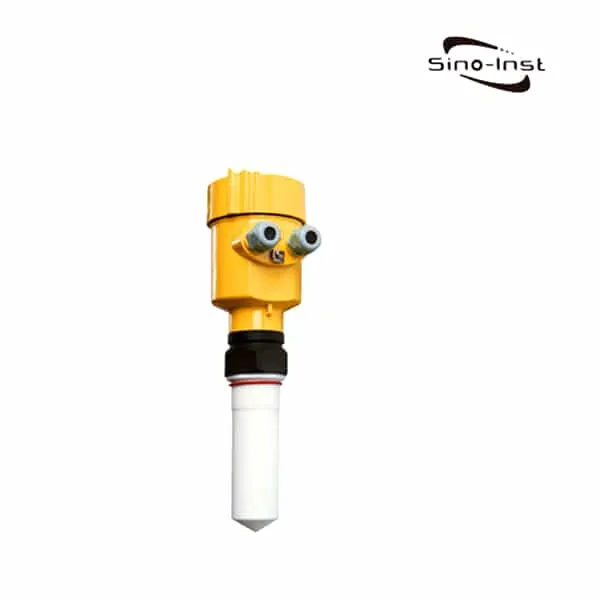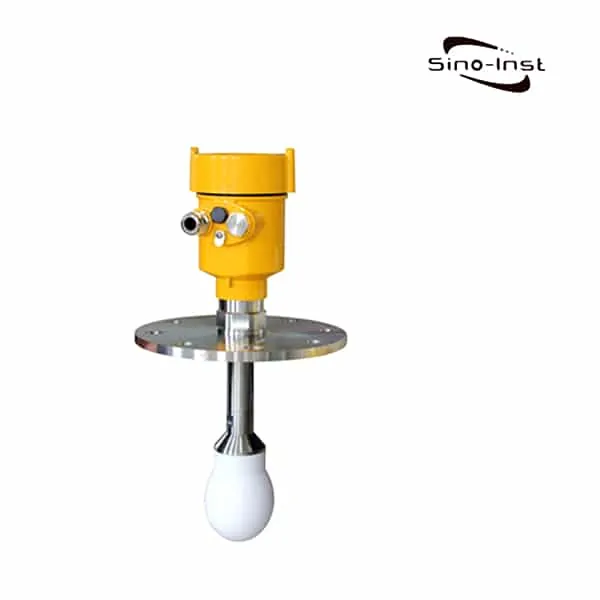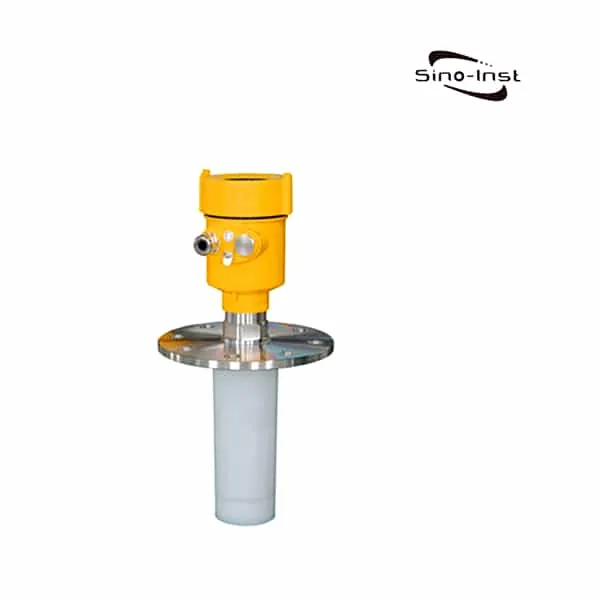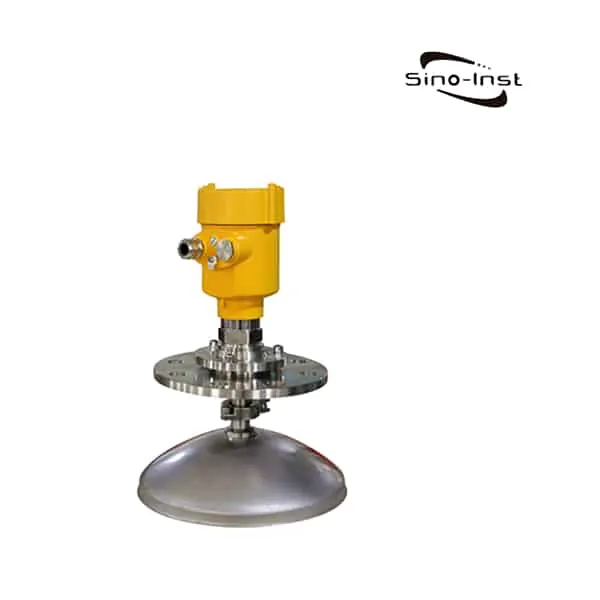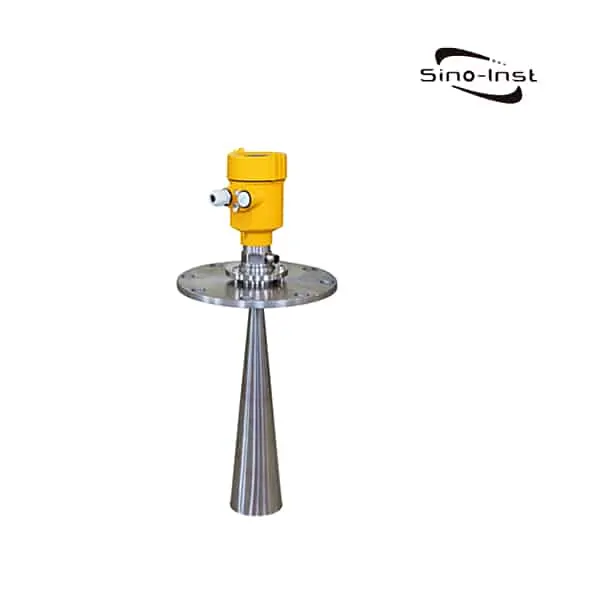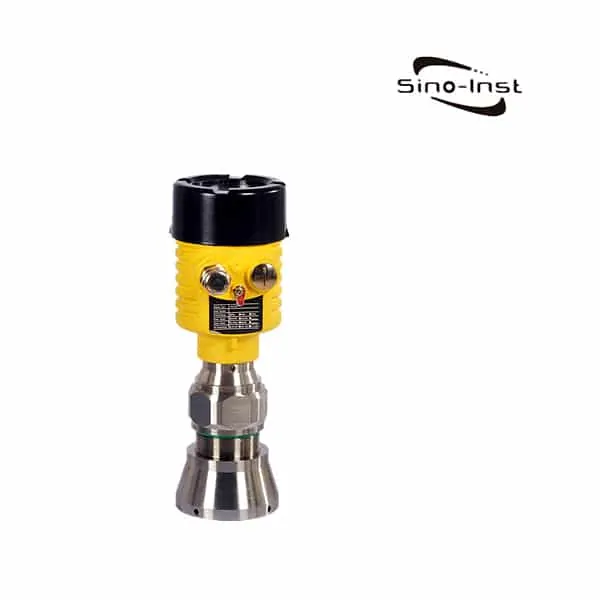80 GHz Radar Level Measurement
80GHZ Radar Level Transmitter refers to a frequency modulated continuous wave (FMCW) radar product operating at 76-81GHz. It can be used for level measurement of solids and liquids. Since it operates at a higher frequency, the wavelength is shorter. It has a smaller diameter. Ideal for dusty atmospheres or low reflective media. It has unique advantages in high dust and harsh temperature environment (+200℃). Small dead zone and narrow beam angle allow use in small and tall vessels.

Unique Technical Advantages of 80GHZ Radar Level Transmitter
80GHZ Radar Level Transmitter refers to frequency modulated continuous wave (FMCW) radar products operating at 76-81GHz. Four-wire and two-wire applications are supported. There are multiple models, the maximum range of the product can reach 120m, and the blind area can reach 8 cm.
Because the 80GHZ Radar Level Transmitter operates at a higher frequency. shorter wavelengths. So it is especially suitable for solid applications. The working method of transmitting and receiving electromagnetic waves through a lens. It has unique advantages in high dust and harsh temperature environment (+200℃).
80GHZ Radar Level Transmitter provides flange or threaded fixing, which makes installation convenient and easy.
The main advantages of 80GHZ Radar Level Transmitter are as follows:
- Based on self-developed CMOS millimeter-wave radio frequency chip. Enables a more compact RF architecture. Higher signal-to-noise ratio, smaller dead zone.
- The 5GHz operating bandwidth enables the product to have higher measurement resolution and measurement accuracy.
- The narrowest 3° antenna beam angle. Disturbances in the installation environment have less impact on the meter. Installation is more convenient.
- Shorter wavelengths and better reflection properties on solid surfaces. Therefore, there is no need for special use of universal flanges for aiming.
- Support remote debugging and remote upgrade. Reduce waiting time. Improve work efficiency.
- Support mobile phone Bluetooth debugging. It is convenient for on-site personnel to maintain work.
Extended reading: Non contact level measurement
Communication and debugging
The instrument can be debugged through the LCD in the field. It can also be debugged on the PC side with the optional host computer software.
The communication between the 80GHZ Radar Level Transmitter and the PC is as follows:
- USB to RS485 serial cable (four-wire system);
- USB to TTL serial cable (two-wire system);
- USB to Hart-modem (two-wire system) for communication.
- Debugging through bluetooth through mobile phone makes on-site debugging safer and more convenient.
- 4G network, remote debugging through remote module.
Extended reading: Radar Level Sensor Advantages and Disadvantages
80GHZ Radar Level Transmitter Measurement Principle
The general principle of the FM continuous wave radar level gauge is that the radar emits electromagnetic waves on the top of the tank. And the electromagnetic waves are received by the radar after being reflected by the medium.
The frequency difference δf between the received signal and the transmitted signal is proportional to the distance R from the surface of the medium:
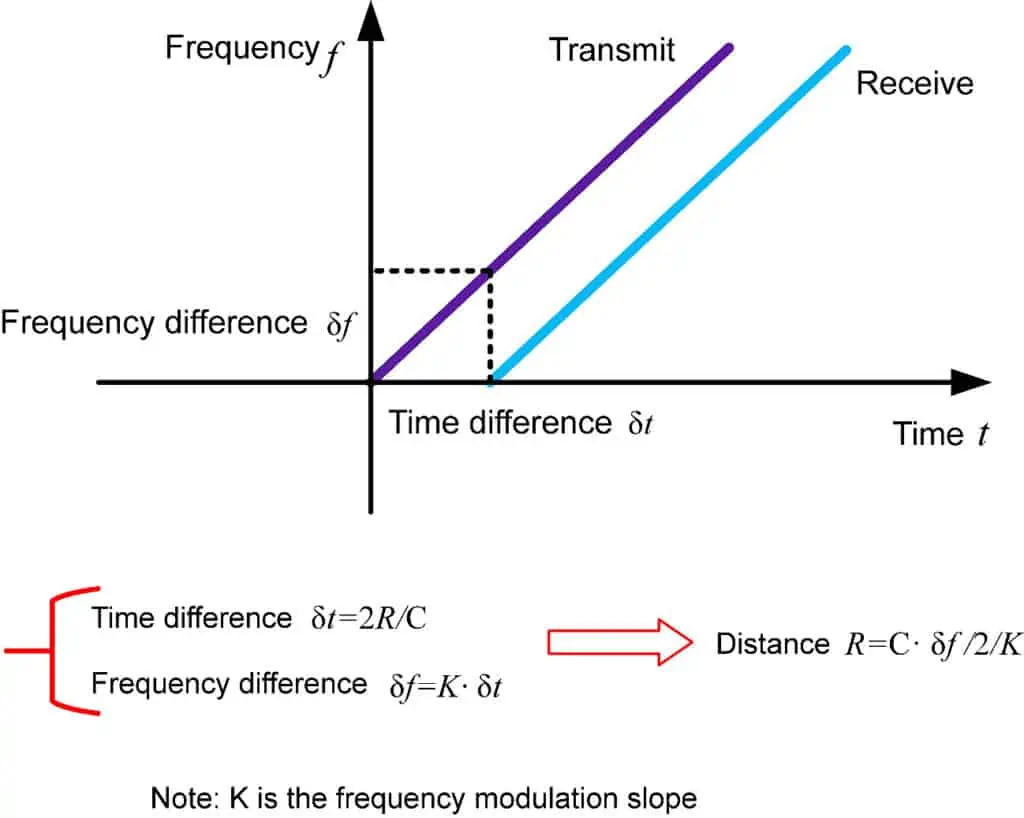
R=C (speed)*δf (frequency difference)/2/K (frequency modulation slope).
Because the speed of light C and the frequency modulation slope K are known.
The frequency difference δf can be estimated to obtain the distance R from the radar installation position to the material surface.
And then through the known total height of the tank. Subtract the spatial distance from the radar to the material surface (referred to as Empty height) to get the height of the material level.
Extended reading: Magnetostrictive Level Transmitter Working Principle
Terminology
Beam angle:
Beamwidth bounded by 3dB below the maximum value. The minimum beam angle of 80GHZ Radar Level Transmitter is 3°, as shown in the figure.

Distance Resolution:
Range resolution refers to the radar’s ability to distinguish between two objects that are very close together.
If the separation between the two objects is less than the range resolution of the level radar. Then the radar can only measure one distance value. This distance value is not equal to the distance value of any of the objects. It is a combination of the distance values of the two objects.
The FM bandwidth of the 80GHZ Radar Level Transmitter is B=5.1GHz. Minimum distance resolution=C/2B≈3cm.
Measurement accuracy (Accuracy):
If there is only one object and this object has moved a small distance. Whether the level radar can detect distance changes. The indicator of how far a single object has moved is called accuracy.
The IF signal of the 80GHZ Radar Level Transmitter is analyzed by its own algorithm, and the measurement accuracy is 0.1mm.
Ambient temperature:
The temperature of the surrounding air in contact with the device enclosure.
Blind spot:
Refers to the measurement limit of the near end of the instrument, and the instrument cannot measure in the blind area.
dB (decibel):
Indicates the unit of signal amplitude.
Dielectric Constant (DK):
The ability of a dielectric to store electrical energy under the induction of an electromagnetic field. Often referred to as the relative permittivity.
The increase in the permittivity is directly proportional to the increase in the echo amplitude. The relative vacuum/dry air dielectric constant is 1.
Echo:
The reflected signal received by the radar.
Emission cone:
The extension of the antenna beam angle.
False echo:
Any echoes that are not generated by the desired target. Generally, false echoes are generated by obstructions in the container.
Multiple echoes:
The multiple reflection echoes appearing at the target echo distance may be 2 or 3 times.
Polarization:
Emitted electromagnetic wave properties, describing the direction and magnitude of the electric field vector that changes over time.
Range:
(1) Refers to the farthest measurement limit of the instrument
(2) Special, refers to the artificially set maximum distance. Outside this distance, the meter does not consider it when processing data.
Repeatability:
In the same test environment, measure the same reflective target multiple times to measure the deviation of the results.
Speed of light:
Symbol C, the speed of electromagnetic waves. Includes electromagnetic waves and light in free space. The speed of light is 299,792,458 meters per second.
Threshold curve:
A time-varying curve that serves as a threshold beyond which echoes are considered valid.
Extended reading: Amazing Solutions for Continuous Liquid Level Measurement
Beam Angle
The beam angle is the beam angle when the radar wave energy density reaches half of its maximum value (3dB width). Microwaves emit signals outside the beam range and can be reflected by interference objects.
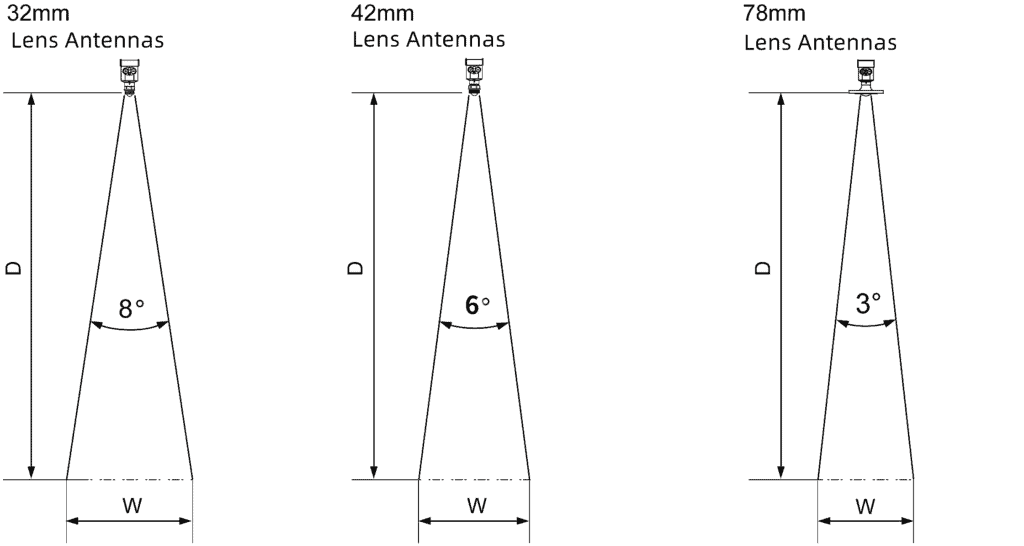
| Lens antenna diameter | Φ32mmLens antenna | Φ42mmLens antenna | Φ78mmLens antenna |
| Beam angle | 8° | 6° | 3° |
The larger the antenna size, the smaller the beam Angle alpha, the less the interference echo will be generated.
For more accurate measurements, avoid installing any internal devices (such as limit switches, temperature sensors, bases, vacuum rings, heating coils, baffles, etc.) within the signal beam range.
Linear
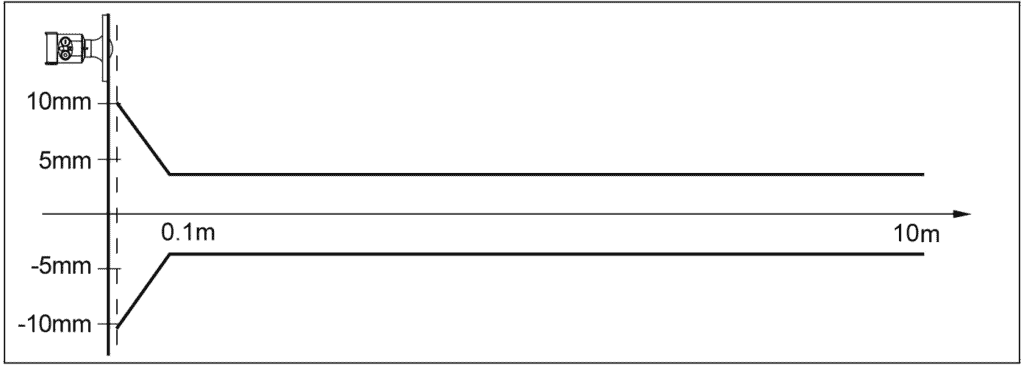
Extended Reading: What is level transmitter working principle?
80GHZ Radar Level Transmitter Applications
80G high frequency radar level meter has the characteristics of high measurement accuracy, wide application range, non-contact measurement, etc. It can be widely used in material level and liquid level measurement of various highly corrosive and high dust media.
The 80GHz radar level meter can not only measure the liquid level, but also measure the solid material level. Including powder materials. It has a good application in different storage tanks. Process storage tanks (silo), reaction tanks, static storage tanks , Dome tank, flat-top tank, spherical tank, horizontal tank, stilling pipe, bypass pipe, tank with agitator.
Applicable working conditions:
- Intermediate silo
- Warehouse
- hopper
- Storage tank
- Process tank
- Mixing tank
Extended reading: Oil-water interface measurement-Magtech magnetic level indicator
Extended reading: Hydrostatic Level Measurement
More Featured Non-Contacting Radar Level Measurement
Frequently
Asked
Questions
Read More about: List of Differences: Radar vs Ultrasonic Level Measurement
Related Blogs
Sino-Inst offers 80GHZ Radar Level Transmitters for level measurement.
A wide variety of 80GHZ Radar Level Transmitters options are available to you, such as free samples, paid samples.
Sino-Inst is a globally recognized supplier and manufacturer of radar level measurement instrumentation, located in China.
Request a Quote

Wu Peng, born in 1980, is a highly respected and accomplished male engineer with extensive experience in the field of automation. With over 20 years of industry experience, Wu has made significant contributions to both academia and engineering projects.
Throughout his career, Wu Peng has participated in numerous national and international engineering projects. Some of his most notable projects include the development of an intelligent control system for oil refineries, the design of a cutting-edge distributed control system for petrochemical plants, and the optimization of control algorithms for natural gas pipelines.

